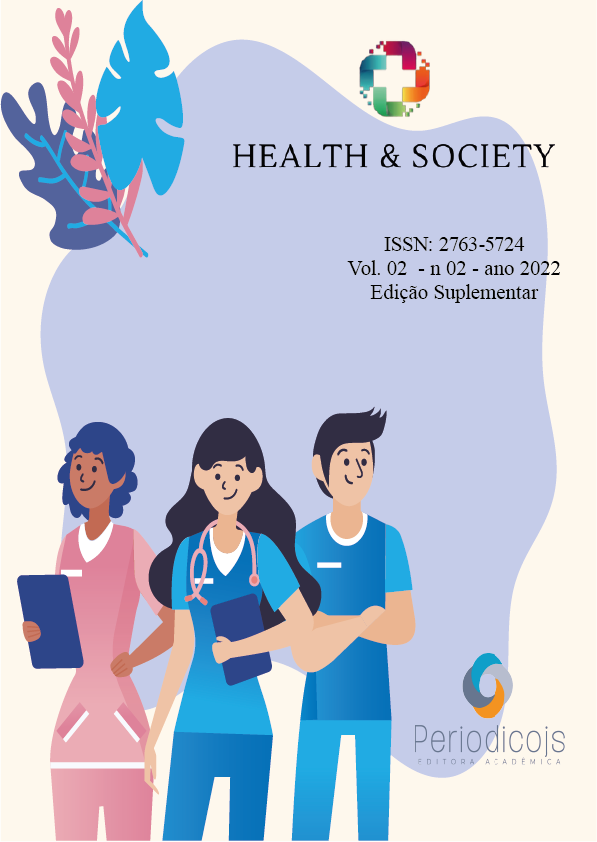Abstract
Introduction: Pain is a symptom that is part of the premature newborns everyday in the Neonatal Intensive Care Unit due to the large number of painful procedures to which they are subjected during their stay. The nurse and the nursing staff because they are professionals responsible for the largest follow-up of neonates during their stay, play an important role in the careful observation and identification of the occurrence of signs that reflect the presence of pain. Objectives: To identify pain scales used in hospitalized newborns; evaluate the applicability of pain scales and benefits for nursing professionals. Methodology: It is an integrative review, which was carried out in search of the Virtual Health Library (BVS), in December 2017, using the keywords pain measurement, Intensive Care Unit and Neonatal Newborn. Results: Results were obtained with the number of publications in accordance with the theme. By analyzing the articles, the scales identified in the newborn pain in intensive care unit environment were NIPS, NFCS, CRIES, PIPP, COMFORT and others did not use scales. There was a predominance in the use of NIPS, since five of the nine selected articles opted for using this scale. The applicability of the pain and the benefits for nurses scales, it is necessary that professionals feel safe with the instrument used in its collection, really assessing pain systematically. The act of participating in training and updating of staff makes the nurse applied properly and uniformly to correct use of the scale. Conclusion: It is suggested that neonatal pain should be considered as the 5th sign of life, but the nurse has a fundamental role to evaluate this phenomenon through the pain assessment scales, providing comprehensive care to the newborn.
References
BOTEGGA, F. H. et al. Avaliação da dor em neonatos e crianças em terapia intensiva. Rev Pesq: fundam.care.online. Rio de Janeiro, v.6, n.3, p.909-17. 2014.
BRASIL. Ministério da Saúde. Secretaria de Atenção à Saúde. Departamento de Ações Programáticas Estratégicas. Atenção à Saúde do Recém-Nascido. Brasília, DF, 2013. 35-40p. Disponível em: http://bvsms.saude.gov.br/bvs/publicacoes/atencao_recem_nascido_%20guia_profission ais_saude_v2.pdf Acesso em: 27 jun. 2017.
BUENO, M; KIMURA, A. F; DINIZ, C. S. G. Evidências científicas no controle da dor no período neonatal. Acta Paul Enf. São Paulo, v. 22, n. 6, p. 828-32. Nov/Dez, 2007.
FALCÃO, A. C. M. et al. Abordagem terapêutica da dor em neonatos sob cuidados intensivos: uma breve revisão. Rev Bras Enferm, Brasília, v.2, n.1, p.108-23. 2012.
FREITAS, Z. M. P; PEREIRA, C. U; OLIVEIRA, D. M. P. Escalas para avaliação de dor em neonatologia e sua relevância para a prática de enfermagem. Pediatria Moderna. São Paulo, v. 68, n. 1, p. 31-39, 2012.
GUINSBURG, R; CUENCA, C. M. A linguagem da dor no recém-nascido. Rev Bras Enferm. Brasília, v. 18, n. 1, p. 99-108, 2010.
LANZA, F. C. et al. A vibração torácica na fisioterapia respiratória de recém-nascidos causa dor? Rev Paul Pediatr. São Paulo, v.28, n.1, p.10-4. 2010.
MARTINS, S. W et al. Avaliação e controle da dor por enfermeiras de uma unidade de terapia intensiva neonatal. Rev Dor. São Paulo, v. 14, n. 1, p. 13-20, 2013.
MENDES, K. D. S; SILVEIRA, R. C. C. P; GALVÃO, C. M. Revisão integrativa: método de pesquisa para a incorporação de evidências na saúde e na enfermagem. Texto Contexto Enfermagem. Florianópolis, v. 17, n. 4, p. 758-764, Out/Dez, 2008.
NICOLAU, C. M. et al. Avaliação da dor em recém-nascidos prematuros durante a fisioterapia respiratória. Rev Bras Saúde Matern. Infant. Recife, v.8, n.3, p.285-90.2008.
PRESBYTERO, R.; COSTA, M. L. V.; SANTOS, R. C. S. Os enfermeiros da unidade neonatal frente ao recém-nascido com dor. Rev Rene. Fortaleza,v.11,n.1,p.125- 32.Jan/Mar.2010.
RAMADA, N. C. O.; ALMEIDA, F. A.; CUNHA, M. L. R. Toque terapêutico: influência nos parâmetros vitais de recém-nascidos. Einstein. São Paulo, v.11, n.4, p.421-25.2013.
ROCHA, M. C. P.; ROSSATO, L. M. Dor neonatal: Revisão de literatura no período de 1998 a 2008. Online braz. j. nurs, Brasília, v.7, n.3, p. 57-61. 2008.
SANTOS, M. L. M; RIBEIRO, I. S; SANTANA, R. C. B. Identificação e tratamento da dor no recém-nascido prematuro na Unidade de Terapia Intensiva. Rev Bras Enferm. Brasília, v. 65, n. 2, p. 34-42. Mar/Abr, 2012.
SANTOS, M. L. M. et al. Avaliação da dor no recém-nascido prematuro em unidade de terapia intensiva. Rev Bras Enferm. Brasília, v.65, n.1, p.27-33. 2012.
SOUZA, B. B. B et al. Avaliação da dor como instrumento para o cuidar de recém- nascidos pré-termo. Rev Bras Enferm. Florianópolis, v. 15, n. 3, p. 88-96, 2006.
SOUZA, M. T; SILVA, M. D; CARVALHO, R. Revisão integrativa: o que é e como fazer. Einstein. São Paulo, v. 8, n. 1, p. 102-06, 2010.
TAMEZ, R. N; SILVA, M. J. P. Enfermagem na UTI Neonatal – Assistência ao Recém-nascido de Alto Risco. Quarta edição. 2010. Ed. Guanabara Koogan.
TAMEZ, R.N. Controle da dor e sedação no neonato. Enfermagem na UTI neonatal: Assistência ao recém-nascido de alto risco. Quinta edição. Rio de Janeiro: Guanabara Koogan, 2013. 355 p.
URSI, S. E.; GALVÃO, C. M. Prevenções de lesões de pele no perioperatório: revisão integrativa da literatura. Rev. Latino-am Enfermagem. São Paulo, v.14, n.1, p.124- 31.Jan-Fev, 2005.
VERONEZ, M; CORREA, D. A. M. A dor e o recém-nascido de risco: percepção dos profissionais de enfermagem. Cogitare Enferm. São Paulo, v. 20, n. 1, p. 263-70. Abr/Jun, 2010.

This work is licensed under a Creative Commons Attribution 4.0 International License.
Copyright (c) 2022 Damião Lucas Viana Roly, Lúcia Gomes de Souza Silva, Liliane Brandão de Melo, Jefferson Allyson Gomes Ferreira, Maria Carolina Salustino dos Santos, Nathalia Claudino do Nascimento, Denise da Silva Carvalho, Adriana Gnecco de Almeida, Tamires Dayanna Alves Resende





